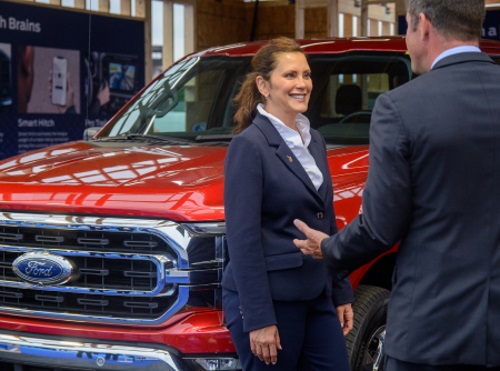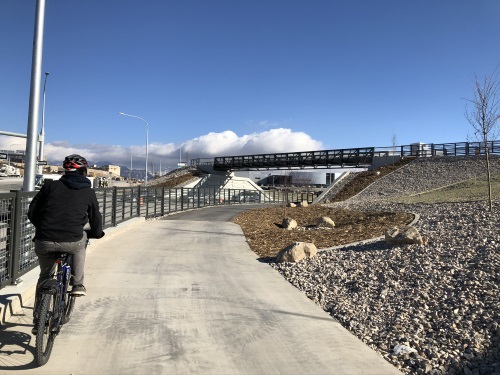FEDERAL ACTION
AASHTO Signs Letter Urging Passage of Infrastructure Bill – AASHTO Journal
Pelosi Says House Will Take Up $1 Trillion Infrastructure Bill Thursday – New York Times
Here’s what’s in the bipartisan infrastructure bill that the House aims to pass – and how it’s paid for – MarketWatch
These Republicans helped craft the infrastructure bill. They might not vote for it. – Politico
States Use Hurricane Ida Damage to Push Infrastructure Bill – Stateline
COVID-19
As COVID-19 restrictions ease, Valley traffic returns and carbon emissions rise – KTAR Radio
SFO becomes first US airport to mandate vaccinations for all workers – The Hill
Longer mass transit commutes in NYC linked to higher coronavirus rates, study says – Staten Island Advance
INFRASTRUCTURE RESILIENCE AND SUSTAINABILITY
Idaho law limits how infrastructure bill can aid transit, leaves future riders waiting – Idaho Statesman
New Yorkers sound off at MTA’s first congestion pricing public hearing – amNew York
The case for funding bike infrastructure – Vox
Will controversial Book Cliffs Highway proposal increase tourism or boost oil and gas production? – Salt Lake Tribune
Florida needs infrastructure built to last – Herald Tribune (Opinion)
AIR QUALITY
Gov. Wolf Announces ‘Pennsylvania Climate Action Plan 2021,’ Calls for Statewide Action Now on Climate Change – Commonwealth of Pennsylvania
Massachusetts utilities propose plans to ramp up electric vehicle infrastructure – Energy News Network
Growing a zero-emissions transportation network in Cincinnati – GreenBiz
American Airlines Partners with Bill Gates and Puts up $100 Million for Green Tech Research – AviationPros
ENVIRONMENTAL JUSTICE
Why the Most Populous U.S. County Just Ended Oil and Gas Drilling – CityLab
D.C.-area leaders consider prioritizing equity in transportation and land use planning – Washington Post
HEALTH AND HUMAN ENVIRONMENT/ACTIVE TRANSPORTATION
NYSDOT Wraps Up Pedestrian Safety Improvement Projects – AASHTO Journal
As SUVs and trucks get bigger, more cyclists and pedestrians die on Colorado roads – KUSA-TV
Bike Paths On Super Highways? – EHS Today
Hardly a peep over return of Bird scooters – Columbia Missourian
King County’s Eastside to receive major multi-modal transportation investment – Bellevue Reporter
County considers pilot program to allow e-bikes on Warren County Bikeway – Post-Star
MDOT State Highway Administration Launches New Project To Enhance Bicycle Safety – WJZ-TV
Regional project seeks to improve walking, bicycle, transit options – News Tribune
Chicago looks to add 100 miles of bike lanes by end of 2022 – Chicago Sun-Times
Active transportation requires a lot of planning, preparation – Daily Herald (Commentary)
Agency of Transportation Announces 2022 Transportation Alternatives Program Grant Opportunity – Vermont Agency of Transportation (Media release)
TRB RESOURCES/ANNOUNCEMENTS
Racial Equity Addendum to Critical Issues in Transportation – TRB
Paths to Biking, Walking Improvements Supported by Wealth of Research – TRB
TRB’s Transportation Explorers Podcast – TRB
Webinar: Transportation Resilience Metrics – TRB
Climate Resilience: Options to Enhance the Resilience of Federally Funded Roads and Reduce Fiscal Exposure – GAO
Fostering Equity in the Practice of Travel Demand Management – Boston Region Metropolitan Planning Organization and the Metropolitan Area Planning Council (Link to webinar registration)
Ready or Not, Here They Come: Preparing for the electric vehicle transformation. – Texas A&M Transportation Institute Thinking Transportation podcast
FEDERAL REGISTER NOTICES
Notification of Public Meetings of the Clean Air Scientific Advisory Committee Particulate Matter Panel – EPA (Notice)
Request for Nominations for the 2022 Clean Air Excellence Awards Program – EPA (Notice)
Hazardous Materials: Public Meeting Notice for the Research, Development & Technology Forum – Pipeline and Hazardous Materials Safety Administration (Notice of public meeting)
Port Access Route Study: Seacoast of New Jersey Including Offshore Approaches to the Delaware Bay, Delaware – Coast Guard (Notice of availability of draft report; request for comments)


